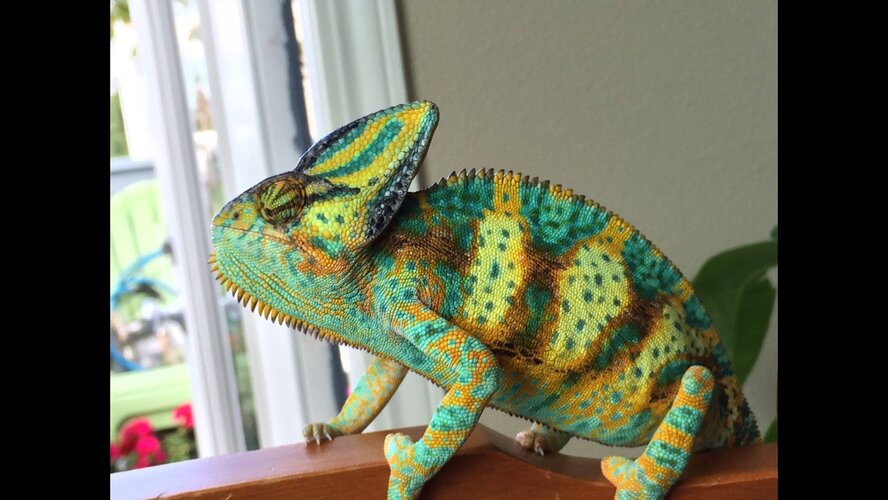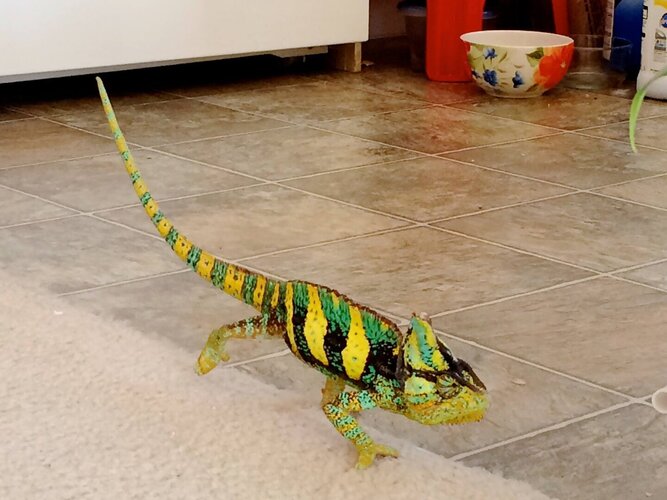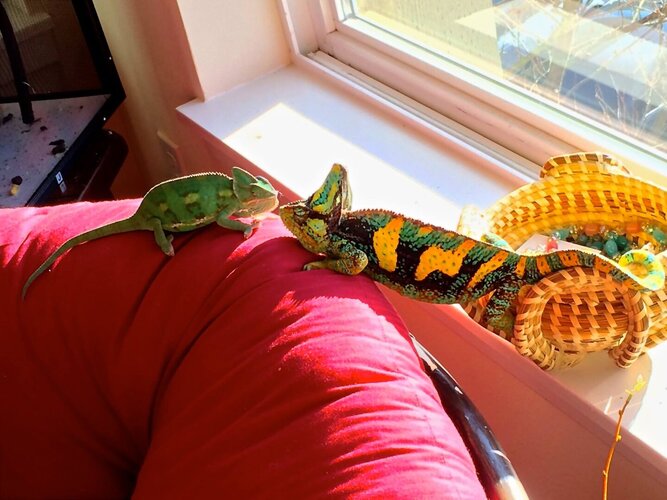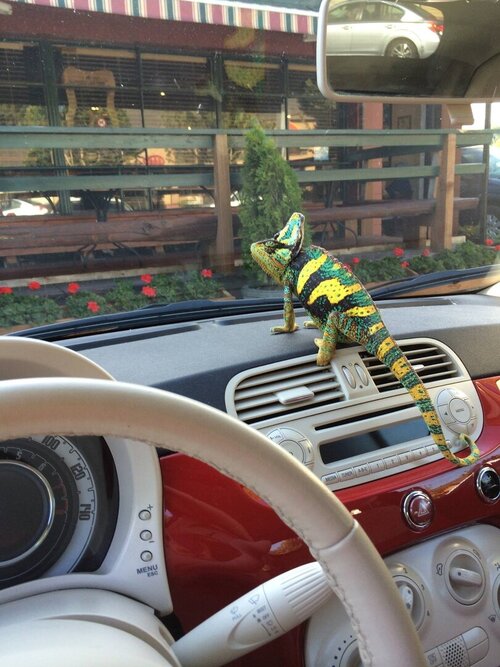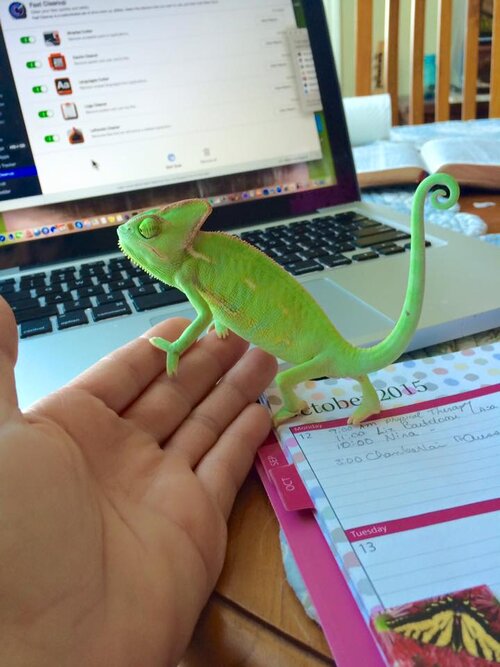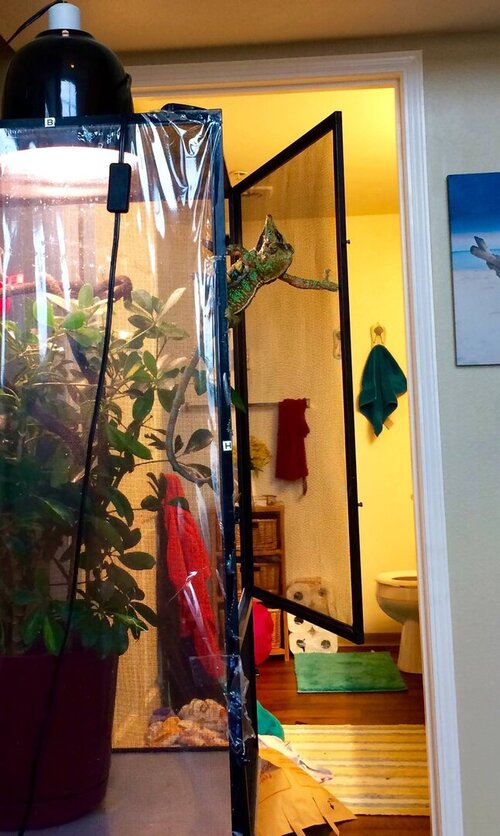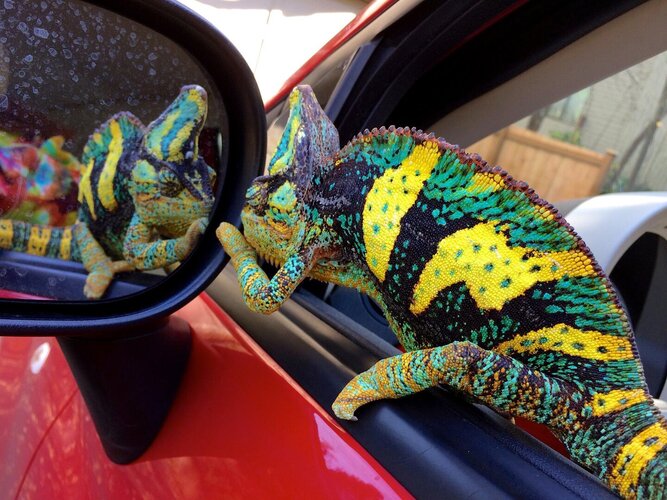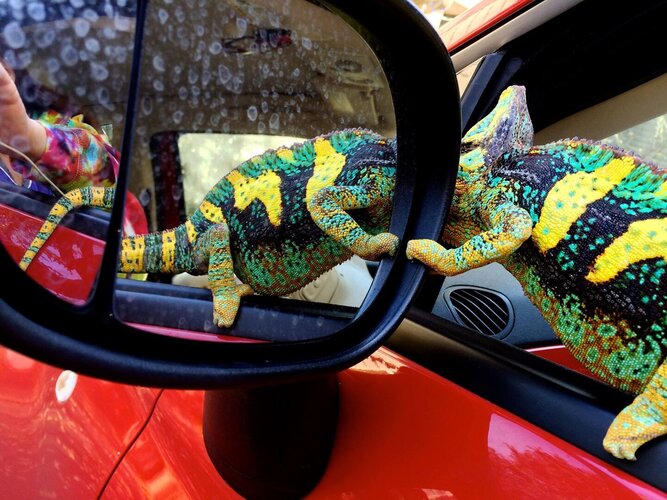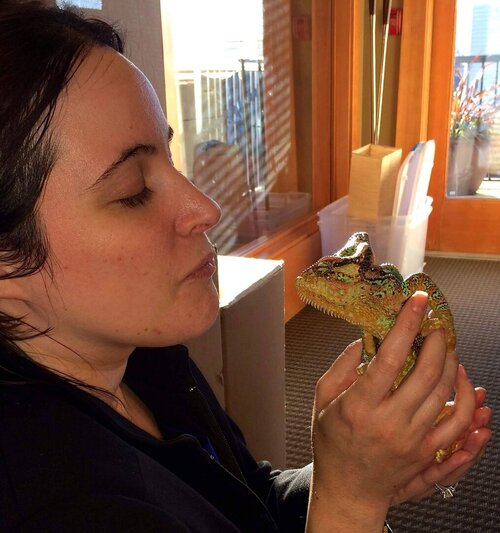JENNIFER NORTHERN
Member
To those who are interested.....
I have been studying for 15 years the difference in the two types of Veiled Chameleons. Here is an article that gives the history of both Veils. This is true in that they both have different personalities and preferences in eating and mating. I have raised the small casque veiled chameleons the most as they are curious, easy to handle and love to bond with humans. The other tall casque veils are more aloof, do not like to bond with humans but prefer to stay hidden.
Here is a link to the article: https://wildlife-facts.weebly.com/veiled-chameleon.html
There are 2 subspecies recognized. The Veiled Chameleon was first described by Peters in 1870 as Chamaeleo calyptratus, he also described a second subspecies, the Short-casqued Veiled Chameleon (Chamaeleo calyptratus).
Veiled Chameleon (Chamaeleo calyptratuswas - Peters, 1870) - From the 2 subspecies this one has a higher crest or casque.
Click on the link above to read more. I have actually talked with a couple of the people who first brought in the species of Veils and validated that they found both species but never studied the habits of each of them.
I am still looking for the small casque veils that have that sweet personality, curious and love to hang onto their 2 legged human!
I think I have found one am currently raising him. He isn't completely like the ones I use to raise but almost.
MY face book page of the previous chams that I use to have is seen here: Jen's Gentle Chameleons on facebook.
Enjoy!
I have been studying for 15 years the difference in the two types of Veiled Chameleons. Here is an article that gives the history of both Veils. This is true in that they both have different personalities and preferences in eating and mating. I have raised the small casque veiled chameleons the most as they are curious, easy to handle and love to bond with humans. The other tall casque veils are more aloof, do not like to bond with humans but prefer to stay hidden.
Here is a link to the article: https://wildlife-facts.weebly.com/veiled-chameleon.html
There are 2 subspecies recognized. The Veiled Chameleon was first described by Peters in 1870 as Chamaeleo calyptratus, he also described a second subspecies, the Short-casqued Veiled Chameleon (Chamaeleo calyptratus).
Veiled Chameleon (Chamaeleo calyptratuswas - Peters, 1870) - From the 2 subspecies this one has a higher crest or casque.
Click on the link above to read more. I have actually talked with a couple of the people who first brought in the species of Veils and validated that they found both species but never studied the habits of each of them.
I am still looking for the small casque veils that have that sweet personality, curious and love to hang onto their 2 legged human!
I think I have found one am currently raising him. He isn't completely like the ones I use to raise but almost.
MY face book page of the previous chams that I use to have is seen here: Jen's Gentle Chameleons on facebook.
Enjoy!

